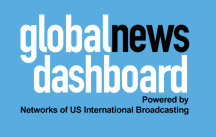![]() (Source: VOA Radiogram)
(Source: VOA Radiogram)
Apologies for not updating this website since the April 20/21 VOA Radiogram. I have been diverted by deadlines connected to my other full-time job, audience research analyst for the International Broadcasting Bureau.
Thanks to all who sent reception reports, screenshots, audio samples, and other materials from the past weekend’s program. MFSK held off a challenge from the Thor modes and remains the most successful of the modes we have tested.
However, because your producer omitted the Thor 50×2 mode — a mode that might prove to be robust — from that program, VOA Radiogram on April 27/28 will include a “make good” transmission of Thor 50×2. And a transmission of Thor 50×1 for comparison.
There will also be a transmission of the PSK63F mode. This rather slow mode performed well during VOA Radiogram 1, but we only gave it a minute. There will be a longer transmission of PSK63F this weekend to allow a better evaluation.
The last text transmission this weekend will be in the Flamp format. If you don’t already have it, please download Flamp from www.w1hkj.com. Flamp divides a text file into several blocks, each with a specific number of characters. If any block is received without the correct number of characters, that block is rejected. The missing block can be picked up during the repeat transmission. Flamp might be useful for those text transmissions that are received at about 90% copy, when occasional deep fades prevent 100% copy. In Flamp, under Configure, check both of the Auto sync boxes.
Here is the lineup for the April 27/28 VOA Radiogram:
MFSK16 (58 wpm) program preview
PSK63F (55 wpm), 2:50
MFSK32 text (120 wpm) and image, 4:28
Thor50x1 (180wpm), 1:48
Thor50x2 (180wpm), 1:46
MFSK64 (240 wpm), 2:16
MFSK128* in Flamp X2 format, 3:46
MFSK32 image*Probably a good idea to set the MFSK128 mode manually rather than depend on the RSID
All modes will be centered on 1500 Hz.
Each mode will be introduced by a brief MFSK16 transmission, same as last weekend.
Please send reception reports to [email protected]
Twitter: @VOARadiogram
VOA Radiogram transmission schedule
(all days and times UTC)
Sat 1600-1630 17860 kHz
Sun 0230-0300 5745 kHz
Sun 1300-1330 6095 kHz
Sun 1930-2000 15670 kHz
All via the Edward R. Murrow transmitting station in North Carolina.Kim




 Following the
Following the 